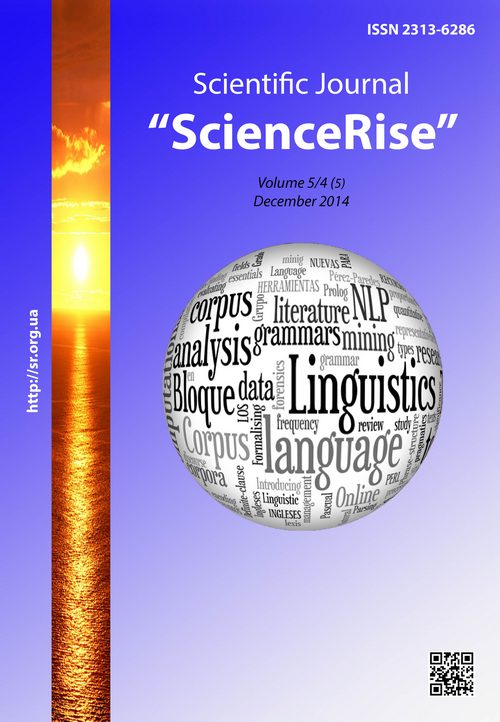Prediction of mortality in patients with acute coronary syndrome in the early and distant periods
DOI:
https://doi.org/10.15587/2313-8416.2014.31916Keywords:
acute coronary syndrome, biomarkers, prognosis, stratification, risk, scale, myocardial infarction, stress, inflammation, cytokinesAbstract
Currently, during the treatment of acute coronary syndrome is emphasized the importance of early risk stratification to identify the most "vulnerable" patients.The use of new biomarker GDF-15 is proposed to improve the prognostic significance of the common GRACE risk scale. The obtained data testify to the effectiveness of developed multifactor model with the inclusion of new biomarker
References
Lange, R. A. (2013). Can You Predict What Happens When EuroSCORE Weds Biomarker?. Journal of the American College of Cardiology, 61 (6), 682–684. doi: 10.1016/j.jacc.2012.11.028
Bootcov, M. R. (1997). MIC-1, a novel macrophage inhibitory cytokine, is a divergent member of the tgf-b superfamily. Proceedings of the National Academy of Sciences, 94 (21), 11514–11519. doi: 10.1073/pnas.94.21.11514
Wollert, K. C., Kempf, T., Peter, T., Olofsson, S., James, S., Johnston, N. et. al. (2007). Prognostic Value of Growth-Differentiation Factor-15 in Patients With Non–ST-Elevation Acute Coronary Syndrome. Circulation, 115, 962–971. doi: 10.1161/circulationaha.106.650846
Xu, J. (2006). GDF15/MIC-1 functions as a protective and antihypertrophic factor released from the myocardium in association with SMAD protein activation. Circulation Research, 98 (3), 342–350. doi: 10.1161/01.res.0000202804.84885.d0
Bonaca, M. P., Morrow, D. A., Braunwald, E. (2011). Growth Differentiation Factor-15 And Risk Of Recurrent Events In Patients Stabilized After Acute Coronary Syndrome: Observations From PROVE IT-TIMI 22. Arteriosclerosis, Thrombosis, and Vascular Biology, 31, 203-210. doi: 10.1161/atvbaha.110.213512
Kempf, T., Sinning, J. M., Quint, A., Bickel, C., Sinning, C. et al. (2009). Growth differentiation factor-15 for risk stratification in patients with stable and unstable coronary heart disease: results from the AtheroGene study. Circulation: Cardiovascular Genetics, 2 (3), 286–292. doi: 10.1161/circgenetics.108.824870
Anand, I. S., Kempf, T., Rector, T. S., Tapken, H., Allhoff, T. et al. (2010). Serial measurement of growth-differentiation factor-15 in heart failure: relation to disease severity and prognosis in the Valsartan Heart Failure Trial. Circulation, 122, 1387–1395. doi: 10.1161/circulationaha.109.928846
Xu, J. (2006). Gdf15/mic-1 functions as a protective and antihypertrophic factor released from the myocardium in association with smad protein activation. Circulation Research, 98 (3), 342–350. doi: 10.1161/01.res.0000202804.84885.d0
Kempf, T., Zarbock, A, Widera, C, Butz, S. et al. (2011). GDF-15 is an inhibitor of leukocyte integrin activation required for survival after myocardial infarction in mice. Nature Medicine, 17 (5), 581–588. doi: 10.1038/nm.2354
Downloads
Published
Issue
Section
License
Copyright (c) 2014 Николай Павлович Копица, Ирина Руслановна Вишневская

This work is licensed under a Creative Commons Attribution 4.0 International License.
Our journal abides by the Creative Commons CC BY copyright rights and permissions for open access journals.
Authors, who are published in this journal, agree to the following conditions:
1. The authors reserve the right to authorship of the work and pass the first publication right of this work to the journal under the terms of a Creative Commons CC BY, which allows others to freely distribute the published research with the obligatory reference to the authors of the original work and the first publication of the work in this journal.
2. The authors have the right to conclude separate supplement agreements that relate to non-exclusive work distribution in the form in which it has been published by the journal (for example, to upload the work to the online storage of the journal or publish it as part of a monograph), provided that the reference to the first publication of the work in this journal is included.

